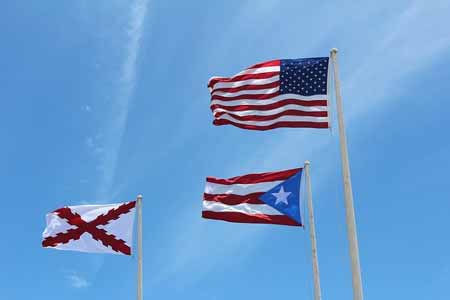In the aftermath of hurricane Maria, many are finding refuge on the mainland United States. What does a Puerto Rican migration of this magnitude entail for language and areas such as education, and what exactly does the migration process look like for those coming from the island?
Escaping Maria Leading To Large Puerto Rican Migration
Due to the extensive damage caused by hurricane Maria, many are anticipating a large exodus of Puerto Ricans to the United States. This has left some wondering what exactly a large movement would mean for the mainland U.S. as well as Puerto Rico. It has also left some confused about the citizenship status of the island residents – are Puerto Ricans US citizens or are they considered immigrants when they come to the States?
The answer to this question is nuanced. Many people in the United States mistakenly identify Puerto Ricans in the U.S. as immigrants from Latin American countries; but the short answer is Puerto Ricans are U.S. citizens.
However, they are also Puerto Rican citizens, and in some cases Spanish citizens.
What Is The Nature Of Puerto Rican Citizenship?
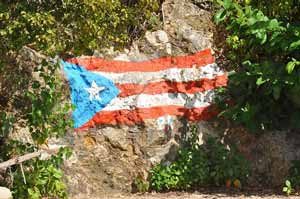
Cultural differences between Puerto Rico and the mainland, as well as political unrest due to the nature of the U.S. – Puerto Rican relationship, may also cause some Puerto Ricans not to identify with the United States.
Along with the U.S. citizenship, Puerto Rico has offered “Certificates of Puerto Rican Citizenship” since 2007, to anyone born in Puerto Rico or anyone born to at least one parent native to Puerto Rico. Native-born Puerto Ricans are also recognized as Spanish citizens, as the island is considered to be an Iberoamerican colony from the time of Spain’s colonial presence there before the Spanish-American war.
What does all this mean for Puerto Rican migration to the United States in the wake of Maria?
Simply put, thanks to automatic U.S. citizenship Puerto Ricans have the ability to move between Puerto Rico and the mainland U.S. much the same as mainland U.S. citizens can move about freely between the 50 states (the same is true for mainlanders moving to and from Puerto Rico).
As such there is no formal immigration procedure, but a large-scale Puerto Rican migration off the island in the wake of damage done by hurricane Maria will still carry cultural and linguistic challenges.
Puerto Ricans in The United States
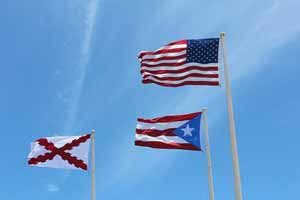
Government officials of Puerto Rico have voiced concern over a mass exodus of people to the mainland United States if more aid is not given to help offset damages inflicted by the hurricane.
The idea isn’t a foreign one, as economic downturn has been playing a hand in the decision for many Puerto Ricans to move to the mainland United States in recent years. In the coming weeks those still on the island will be faced with a decision to either stay or leave if conditions do not improve.
It is expected that between 2017 and 2019 over 400,000 people will leave Puerto Rico for the mainland.
Puerto Ricans In Florida
Evidence of a large Puerto Rican migration can already be seen. Thousands of Puerto Ricans have already fled to Florida after Hurricane Maria. Orlando Florida is one of the areas seeing the greatest influx in Puerto Ricans since the disaster. More than 2,000 new students have been enrolled in schools in Puerto Rico, and many families without relatives in the area are forced to live in hotels on FEMA subsidies.
These subsidies threaten to run out in January, potentially leaving thousands of people without stable housing conditions. On the bright side, many education professionals from Puerto Rico have been hired upon arrival in Florida airports. These individuals will help support the growing Puerto Rican student populations, and provide some families with steady income.
On a more national level, the immigration and permanent residence of many Puerto Ricans in Florida is expected to shift the political leaning of the notorious swing state further to the left.
Puerto Ricans in New England
In Holyoke Massachusetts, half of the total population of 40,000 is Latino, a majority of which are Puerto Rican. These numbers allow the city to boast the largest Puerto Rican population per capita in the United States. As a result Holyoke could expect to see a large influx of families following the mass migration.
Some officials have predicted a potential Puerto Rican migration of hundreds of thousands, and movement to this degree would mean cultural and language challenges; impacting many communities and sectors in the mainland states.
Puerto Rican Influence on United States Culture
Culturally, ever since the Spanish-American war, Puerto Ricans have brought a unique flavor to the U.S. through sports, food, beliefs and the pressing of different political and social rights movements in the United States.
Baseball players are largely of Puerto Rican (and Dominican) Heritage, including many players on popular U.S. teams. In fact, baseball is the number one sport on the island of Puerto Rico, thereby producing many excellent players.
Many examples of Puerto Rican culture can also be found in the food we eat, the music that we listen to, and the words that we have adopted from the Spanish language. The ever popular “arroz con pollo” or “arroz con habituelas” originates from the island’s staple foods: rice, chicken, and beans.
Reggaeton, a mixture of hip hop and Latin American and Caribbean influences, can trace its origins back to Puerto Rico. One of the biggest hits of this past summer, Despacito, was written and sung by a native Puerto Rican singer and musician.
Influence can even be found on our stages. Lin-Manuel Miranda, the creator of the current number one hit on Broadway Hamilton, is originally from Puerto Rico. He has been a vocal advocate for emergency assistance after the hurricane, and even released a new song to raise money for relief efforts in Puerto Rico.
Aside from the sports we watch, food we eat, and music and shows we enjoy, there are influences of Puerto Rican culture in many social movements and events. Areas with large communities, such as New York City, Philadelphia, Boston and Chicago, embrace cultural events celebrated by Puerto Ricans residing in their cities.
New York especially has a long history with Puerto Rico. In 1961, Puerto Ricans founded “Aspira,” one of the largest national Latino nonprofit organizations and leaders in education in the United States. Following the recent disaster of Hurricane Maria, New York Governor Andrew Cuomo even led an effort to aid the island in restoring its electrical grid, sending engineers from the New York Power Authority to help.
In the founding of educational and social institutions like Aspira, and the adoption in the mainland U.S. of artistic and social practices, Puerto Ricans have preserved their cultural heritage and made it an integral part of U.S. life.
The prevalence of an intermingling culture however, does not totally diminish the challenges faced by a large Puerto Rican migration. There are of course differences between the culture in U.S. mainland states, and that of Puerto Rico which will present challenges. Communicative practices and values more aligned with collective cultures (as opposed to the U.S. individualism and focus on personal achievement), and tensions between Puerto Ricans and the United States due to their historically complicated relationship are two examples.
However, perhaps some of the greatest challenges to the Puerto Rican migration will be those concerning language.
Language Barriers In The Way Of Puerto Rican Migration
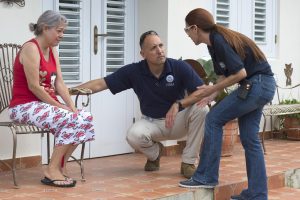
With another potential wave of Puerto Rican migration there will also likely be an increased need for Spanish interpretation and translation services —especially in the areas of resettlement services, healthcare, and education.
Both Spanish and English are the official languages of Puerto Rico, but only about 21% of Puerto Ricans over the age of five speak English fluently or very well according to the 2011-2015 American Community Survey 5 Year Estimates. While a majority of Puerto Ricans do speak Spanish (94.5%), it is a dialect with pronounced differences.
Puerto Rican Spanish
Puerto Rican Spanish belongs to the group of Caribbean Spanish variants and has been influenced by various factors. For example, many words have been adopted from the indigenous Taíno language, and the pronunciation of some Spanish words has been influenced by African dialects brought to the island as a result of the slave trade.
Many English words and phrases have also been incorporated into the language making it distinct from the Castilian Spanish spoken in Spain.
Major differences in pronunciation are caused by the lateralization of /r/ to [l] (E.g. “Puerto Rico” would be pronounced “Puelto Rico”). Some everyday words or phrases can also be completely different:
-
- The word “Bus” in Castilian Spanish is “autobus”, while Puerto Ricans more commonly use the word “guagua”.
-
- “That is cool” in Castilian Spanish is “esto mola”, while in Puerto Rican Spanish, one would say “está chévere”.
-
- “Papi” in Puerto Rico is used to refer to one’s father as in “Dad”, or alternatively one’s boyfriend. “Mami” is one’s mother as in “Mom”, or girlfriend. These terms of endearment are not used in Castilian Spanish in Spain. Rather “Papá” and “Mamá” are used.
-
- “Llamar pa’ atrás” is used in Puerto Rico to literally say “I will call you back.” However in most other Spanish speaking countries one would say “te llamaré de nuevo”, “te llamo más tarde” or “te llamo después”.
-
- Lonchera (lunch box), parquear (to park) and pichear (to pitch) all have obvious English influences
How Will The Language And Culture Affect U.S. Life?
If faced with a significant and permanent Puerto Rican migration, services including education, medical, legal and housing will all be significantly impacted. Many states are preparing to receive large numbers of Puerto Ricans and hoping to facilitate the process of resettlement.
Many of the areas where new Puerto Rican migrants are fleeing to are home to others from their communities or families. This means that some bilingual services are already in place for Spanish speakers. This will facilitate the resettlement process to some extent, but the sudden increase in numbers is expected to put a greater demand on the existing services.
Academic Translation and Language Needs
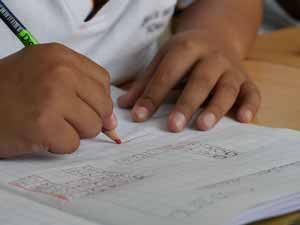
Although English is taught in public schools, instruction in Puerto Rico is conducted entirely in Spanish. This means that the demand on the language support systems at non-bilingual English-Spanish schools will be greatly increased.
Healthcare Translation and Language Needs

Past experience with the Spanish speaking community regarding healthcare in the United States demonstrates that there are major consequences when an effort is not made to compensate for language barriers. There, unfortunately, is still room for improvement to ensure that these issues are properly addressed.
Medical documents will also need to be translated and localized into English in order to carry over one’s medical history.
Legal Translation and Language Needs

Describing these changes to LEP individuals will require the work of interpreters. Such changes may also affect certain documents such as legally binding contracts involving employment, housing, healthcare, etc. that will need to undergo translation. Other issues relating to housing will also occur, as individuals and families will need to understand the legal language and processes involved with buying or renting a home.
Bracing For The Language And Cultural Barriers Ahead
Relief efforts for the devastation caused by hurricane Maria are underway; however, addressing the major challenges is anticipated to take months. In this time it is expected that the U.S. will see an influx of Puerto Rican migrants.
While Puerto Ricans and individuals residing in the mainland share citizenship, cultural differences and language barriers will present challenges in the days ahead. Proactively making resources available to non-English speaking migrants through readily available translations and interpreting services will ease some of the adjustment pains; however, it will not be an easy resettlement for Puerto Ricans or mainland U.S. residents alike.
Learn more about our Legal Translation services.
Sources:
- Wikipedia – Ibero-American
- Library of Congress – Immigration Puerto Rican / Cuban
- Wikipedia – Puerto Ricans in the United States
- American Fact Finder
- Pew Research Center – Puerto Ricans Leave In Record Numbers For Mainland US
- Vox – What the Hurricane Maria migration will do to Puerto Rico and the US
- Mass Live – Housing, Healthcare, Education Help Planned For Puerto Rico
- NPR – Puerto Ricans Flee To Florida
- Lesley University – The Language Minority Assessment Project
- U.S. History Scene – Puerto Rico’s Relationship with the United States
- PRI – What it means to be “American” is different for Puerto Ricans
- Thought Co. – Are Puerto Ricans Immigrants in the U.S.?
- FluentU – Do You Know the 8 Differences Between Castilian and Latin American Spanish
- France 24 – Big Changes For Florida With Mass Puerto Rican Migration
- NPR – A New Reality Students and Teachers From Puerto Rico Start Over in Florida
- News24 – Puerto Rico Population to Drop 14% After Hurricane
About Language Connections:
Language Connections is one of the top language service companies in the US. Over the last 30 years, we’ve focused on providing the best business translation services, interpreting services, as well as interpreter training and customized language training programs. In addition to top-tier corporate language training, we offer certified corporate interpreters and professional business translation services in 200+ languages. Our network includes linguists with backgrounds in all major industries. They’re ready to meet your needs, whether they’re for technical translation services, legal translation, government translation services, international development translation services, education translation services, life sciences translation, or something else. Reach out to us today for a free quote on our cost-efficient and timely translation services, interpreters, or other linguistic services.
Language Connections Inc.
2001 Beacon Street, Suite 105,
Boston, MA 02135
Phone: +1-617-731-3510
Email: service@languageconnections.com

